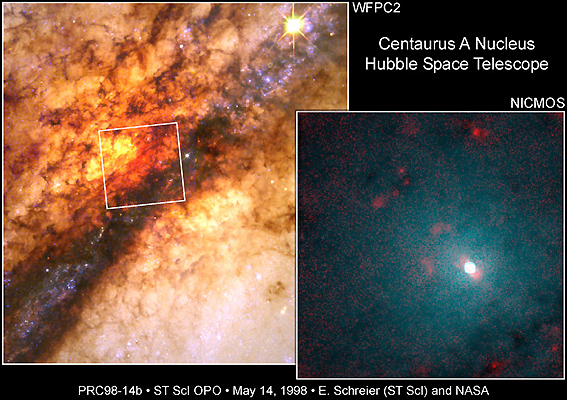| Astronomers
have used NASA's Hubble Space Telescope to probe the core of the nearest
active galaxy to Earth, Centaurus A.
[UPPER LEFT] - A close-up high resolution Wide Field Planetary Camera 2
image of the dramatic dust disk which is thought to be the remnant of a
smaller spiral galaxy that merged with the large elliptical galaxy. The
shock of the collision compressed interstellar gas, precipitating a flurry
of star formation and giving the material a fleecy pattern. Dark filaments
of dust mixed with cold hydrogen gas are silhouetted against the incandescent
yellow-orange glow from stars behind it. |
 |
[LOWER
RIGHT] - Hubble's Near Infrared Camera and Multi-Object Spectrometer was
used to peer past the dust to discover a tilted disk of hot gas at the galaxy's
center (white bar running diagonally across image center). This 130 light-year
diameter disk encircles a suspected black hole which may be one billion
times the mass of our Sun. The disk feeds material to presumably an inner,
unresolved accretion disk that is made up of gas entrapped by the black
hole. The red blobs near the disk are glowing gas clouds which have been
heated up and ionized by the powerful radiation from the active nucleus.
|
|

